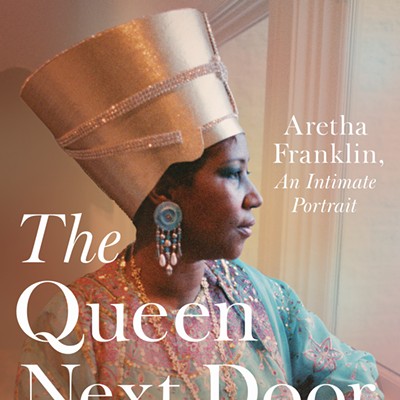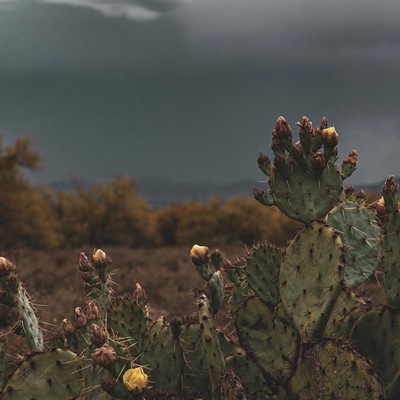The rest of his long, busy and by all accounts very happy life was devoted to perfecting the art and painstaking craft of rendering not Nature itself, exactly, but the grace and order he found in it.
Many of the silvery, utterly assured black-and-white images are old friends from books, calendars and posters, but familiarity makes the centennial show of Adams' core work at the Center for Creative Photography (co-founded by Adams in 1975) all the more astounding. Some artists' stuff looks exactly the same on the museum wall as it does on a postcard, while the work of others--Jackson Pollack, for instance, or Van Gogh--is a whole new deal in the original. Adams turns out to be like Van Gogh. Not surprising, perhaps, given his lifelong insistence on print quality as "the most important characteristic" of his work. He wasn't just trying to keep prices up.
The first image on the wall in Classic Images and A Portrait of Ansel Adams is a huge print "circa 1950s" of "Merced River, Cliffs, Autumn, Yosemite Valley, California," ca. 1939. (Adams wasn't great on dates.) Next to it hangs a much smaller print from the same negative. It's the same ravishing orchestration of velvety black, lustrous gray and almost surreal white--in both prints, one lick of horizontal sun on a stump at middle left is so bright it looks as if it must be Sno-Pake--but the difference in size has an almost dizzying effect. The big print is at least 40 inces wide and, standing before it, you feel enveloped in a still, immaculate, endlessly detailed Eden of quiet water, glinting leaf and drying grass. It's identical to but radically different from the dainty companion-print, which presents the same perfectly managed moment in the reassuring calendar size we're accustomed to.
Five chronologically arranged prints from a single negative--"Monolith, the Face of Half Dome, Yosemite National Park, California," 1927--demonstrate Adams' changing taste and capabilities as a print-maker, and make it clear that various prints from the same negative are in some ways analogous to different performances of the same piece of music. (For anyone who doubts that photography as Adams practiced it was a subtle art, see his generous, eloquent and totally obsessive Examples: The Making of 40 Photographs, 1976.) The first print from the "Monolith" negative, also made in '27, is a ho-hum, sepia-toned affair--great scenery, swell composition, but, really, so what? Then, as Adams fiddles with the image over a period of nearly 50 years, we watch the power of the image emerge, until we finally get the thing we know, but richer than we've ever seen it before. No Sierra Club calendar, however lovingly produced, can come close to what Adams finessed in the darkroom.
These demonstrations are just the start of this deeply satisfying exhibition, which was drawn from the Center's massive Adams archive and roughly reproduces a 1985 display at the National Gallery of Art. (Ansel Adams: Classic Images, which served as catalog of that exhibit, is available at the Center.) The exhibit is further enriched by many portraits of Adams, and by letters, journals, cameras and other ephemera owned by the Center, all deftly arranged and explained.
The wonder, of course, is not the life but the art, and it is breathtaking. Honestly, if you have any taste at all for Adams' work, you owe yourself a visit to the heavenly image of Bridal Veil Fall--billowing, falling foam framed by lacy pines--not to mention glimpses of the ineffable truths Adams sighted in waves and dunes and churches, in a nearly full moon over Half Dome, in oaks in the rain and in fruit trees just coming into bloom. There are the surprises, too, things you don't expect from the John Muir of the darkroom. Check out the jewel-like abstractions--Adams preferred "extracts"--like "Grass and Pool, The Sierra Nevada, California," 1935, here in a print so dense that the reflections of the grass in the water disappear, producing a black-and-white pattern as stylized and elegant as a Japanese textile print.
The show's up until July. Don't miss it.










